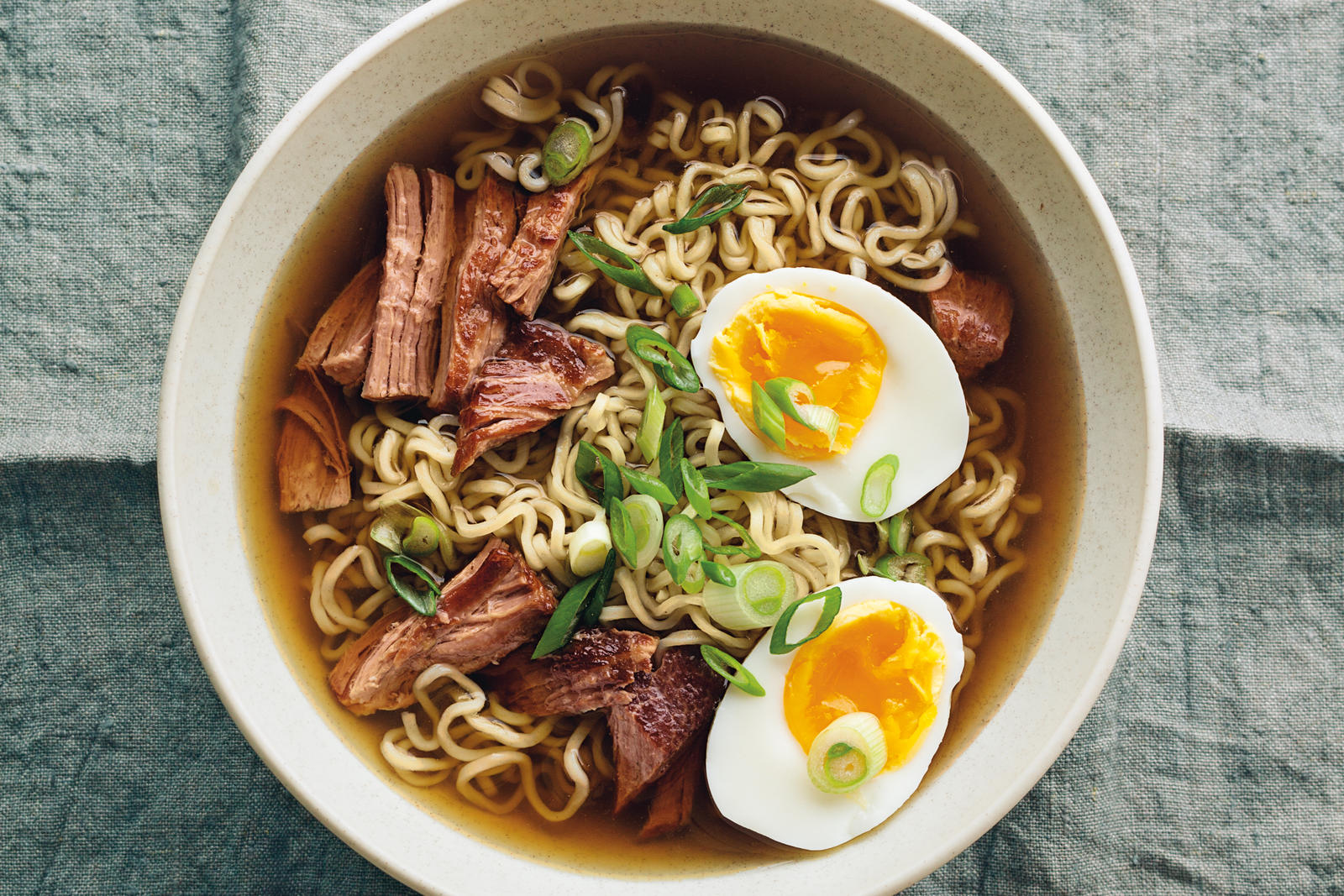While most of us are probably familiar with the pre-packaged ramen that involves adding hot water, have you ever wondered what authentic ramen tastes like? (Did you even realize it was a thing? Well, it is! And it’s delicious.) In fact, ramen is one of Japan’s best dishes in my opinion. While most of us (unfortunately) can’t zip off to Japan for a fresh, piping hot bowl of ramen, you can make authentic Japanese ramen at home.

Getting the Ingredients.
While packaged ramen is actually a Japanese invention, truly authentic ramen doesn’t come from a package. Therefore, it does take some prep work (and if adding water and a seasoning packet to a bowl of noodles was the extent of your ramen experience, that’s ok!).
Authentic ramen does require specialized shopping at an Asian or international market, but don’t worry, because the prep isn’t difficult and the end result is so worth it! Here are the ingredients you’ll need for an authentic Japanese culinary experience in your very own kitchen:
Shoyu Ramen
Dashi and Tare
2 large pieces dried konbu (also known as kombu, which is a type of dried seaweed)
1/2 cup low-sodium soy sauce
1 1/2 Tbsp. mirin (a sweet, rice-based, Japanese cooking wine)
2 1/2 Tbsp. dry sake (look for a +6 or greater SMV (Sake Meter Value) rating, the higher the better; if you can’t find the SMV, just do your best guess)
Soup Stock and Meat
3 lb. boneless pork shoulder or beef brisket
Sea salt and ground black pepper
2 1/2 Tbsp. vegetable oil
1/3 cup bonito flakes (dried, smoked flakes of skipjack tuna)
3 large carrots, peeled and chopped
2 medium-sized cloves of garlic, cut in half
Large piece of ginger root (12″ or so), peeled and sliced
3 large scallions, washed and thinly sliced
Noodles and Toppings
6 5-oz. packages fresh ramen noodles (you can get these in the refrigerated section of the Asian market or international grocer)
3 large eggs
3 toasted nori sheets, broken in half (nori is a type of seaweed often used in sushi)
Toasted sesame oil
3 tsp. toasted black sesame seeds (if available; if you can’t find them that’s ok)
Other
Cooking twine
Preparation
First, make the dashi. This acts as the base of the ramen and should be made ONE DAY AHEAD. Combine konbu and 4 quarts cold water in a large bowl. Cover and let sit at room temperature for 10-12 hours. Then make the tare by combining the soy sauce and mirin in another bowl. Cover and chill tare mixture.
Then, prepare the pork or beef (also one day ahead). To keep the meat tender, it’s best to use cooking twine and tie off every 2-3″ of the meat. If not, the meat can be a tad dry and won’t cut as easily. Season the meat with salt and pepper. Heat vegetable oil in large pot on medium heat, add meat and cook approximately 10-12 minutes, turning, so the entire outside is browned. Add bonito flakes, carrots, garlic, ginger and scallions to the pot. Then, remove konbu from dashi and discard; pour liquid into pot. (If not all dashi will fit, you can gradually add the rest as the mixture reduces). Bring to a boil and reduce heat to low. Simmer 2 1/2 – 3 hours; skim the surface as needed to remove excess fat (you should have about 2 quarts of liquid).
Remove the meat and let it cool. Then wrap it in plastic and chill overnight. Strain liquid and discard solids. Cover and chill.
THE DAY OF: First, fill a large pot with water and bring to a boil. Add eggs carefully and boil for 7 minutes (the yolk should be very soft and the white just barely solidified). Remove eggs from boiling water and immediately place in ice water.
While eggs are cooking, prepare noodles. Cook noodles according to package directions. Drain noodles and place in bowls for serving (should be approximately 6 servings).
Remove string and thinly slice the pork. Place pork on top of the noodles, to one side. Next, add tare to the hot stock and stir gently to mix. Ladle stock over noodles (not too much – the liquid should just cover the noodles). Halve the eggs and place a slice next to the pork. Then place the chopped scallions next to the egg. Finally, place a piece of nori halfway in the ramen, against the edge the bowl.
Top with sesame oil and sesame seeds.
Serves 6.
Now, enjoy!! Taste for yourself why ramen is truly one of Japan’s best dishes. But beware, you may never look at packaged ramen the same again!




Hi,
As of right now I don’t utilize guest posting, but down the road, as the site grows, it is something I will incorporate. I will be sure to save this message and your info. 🙂